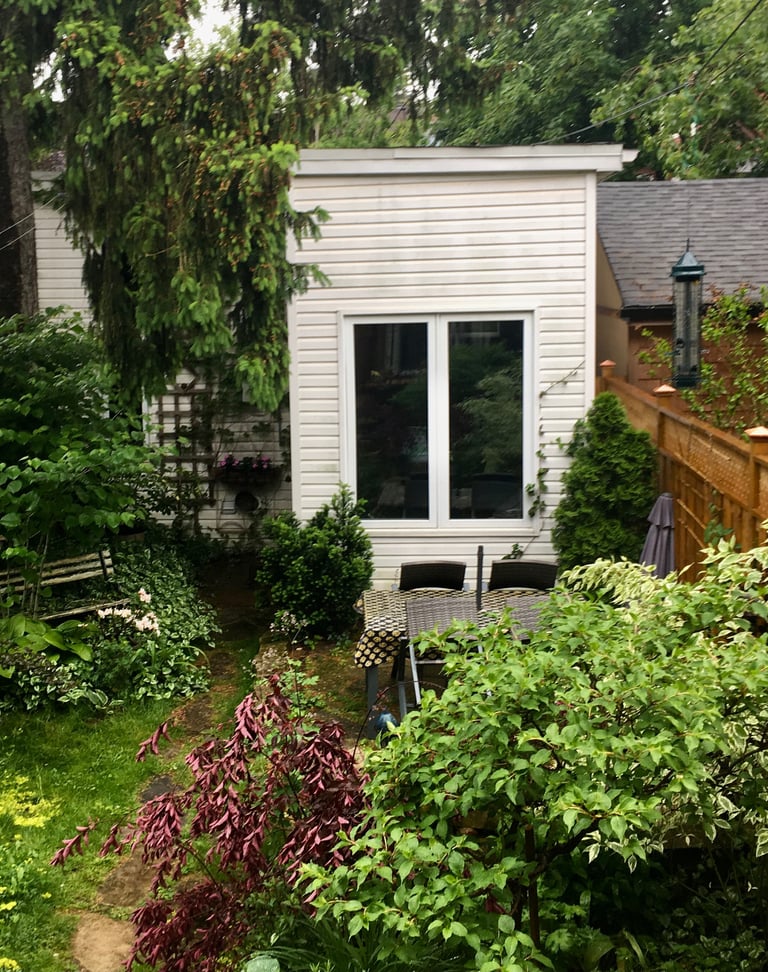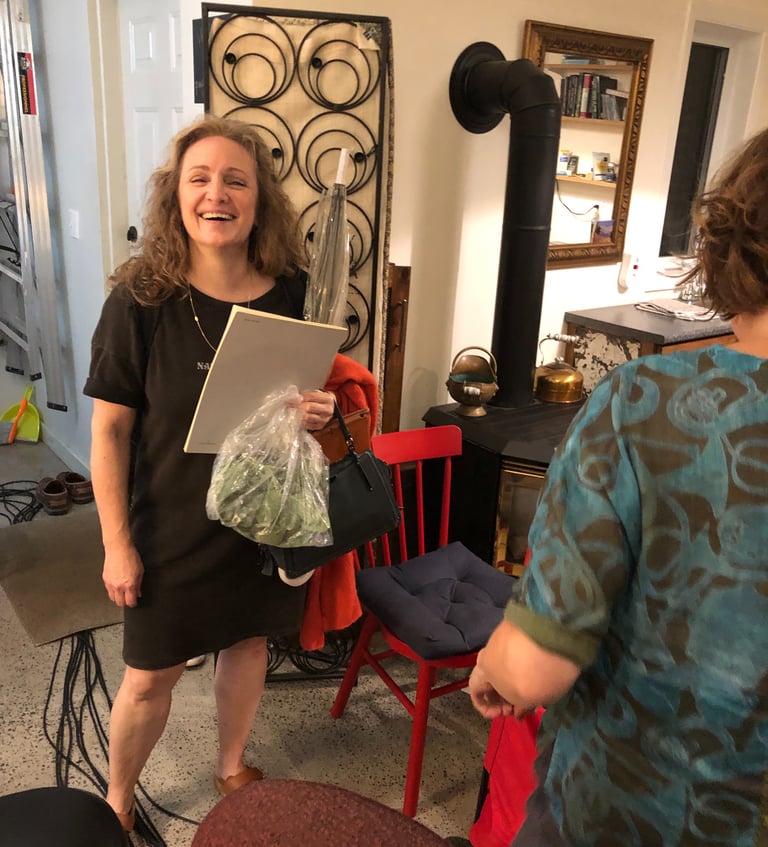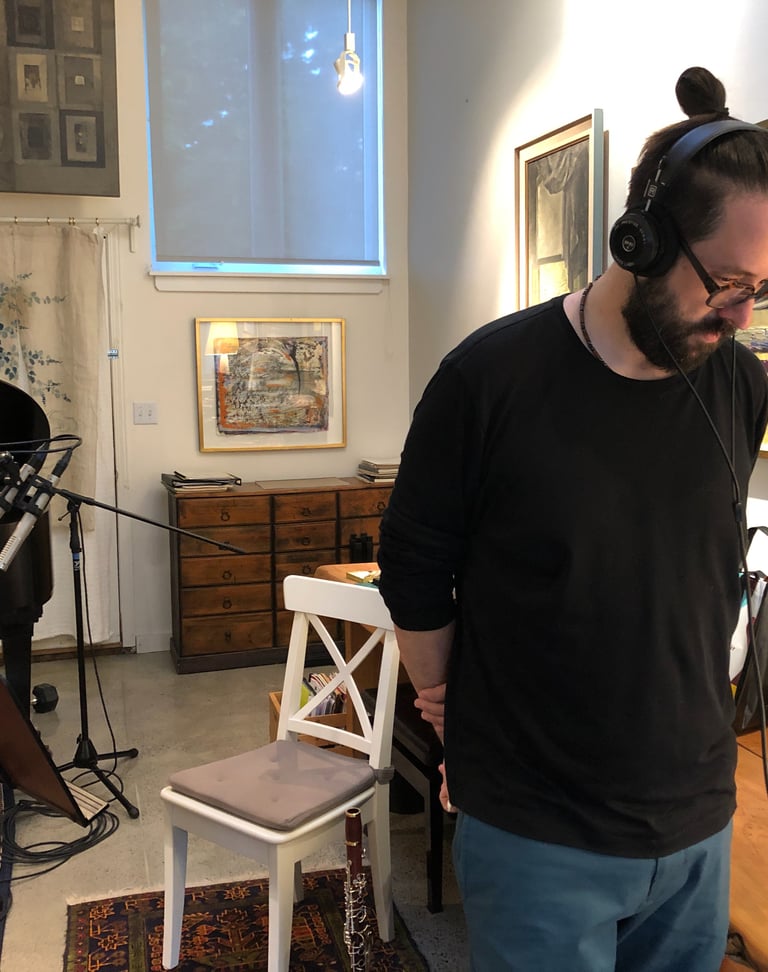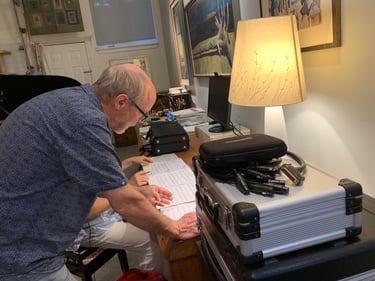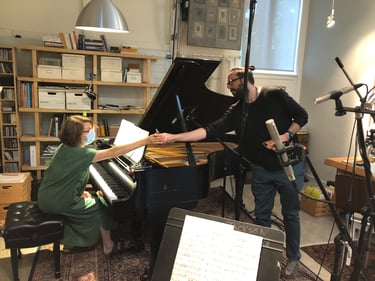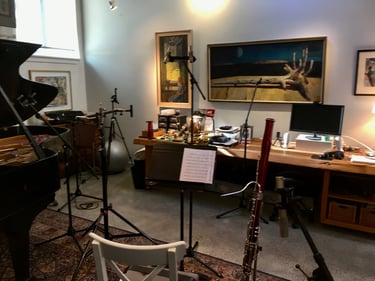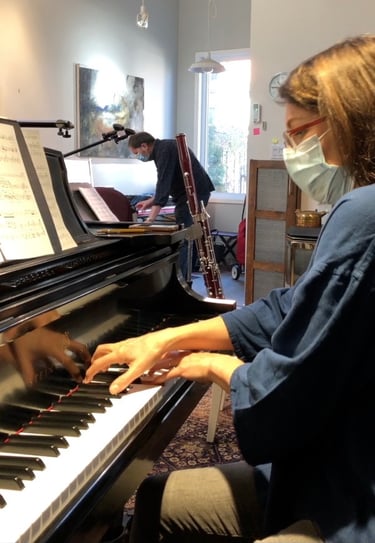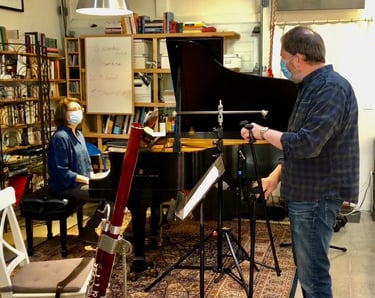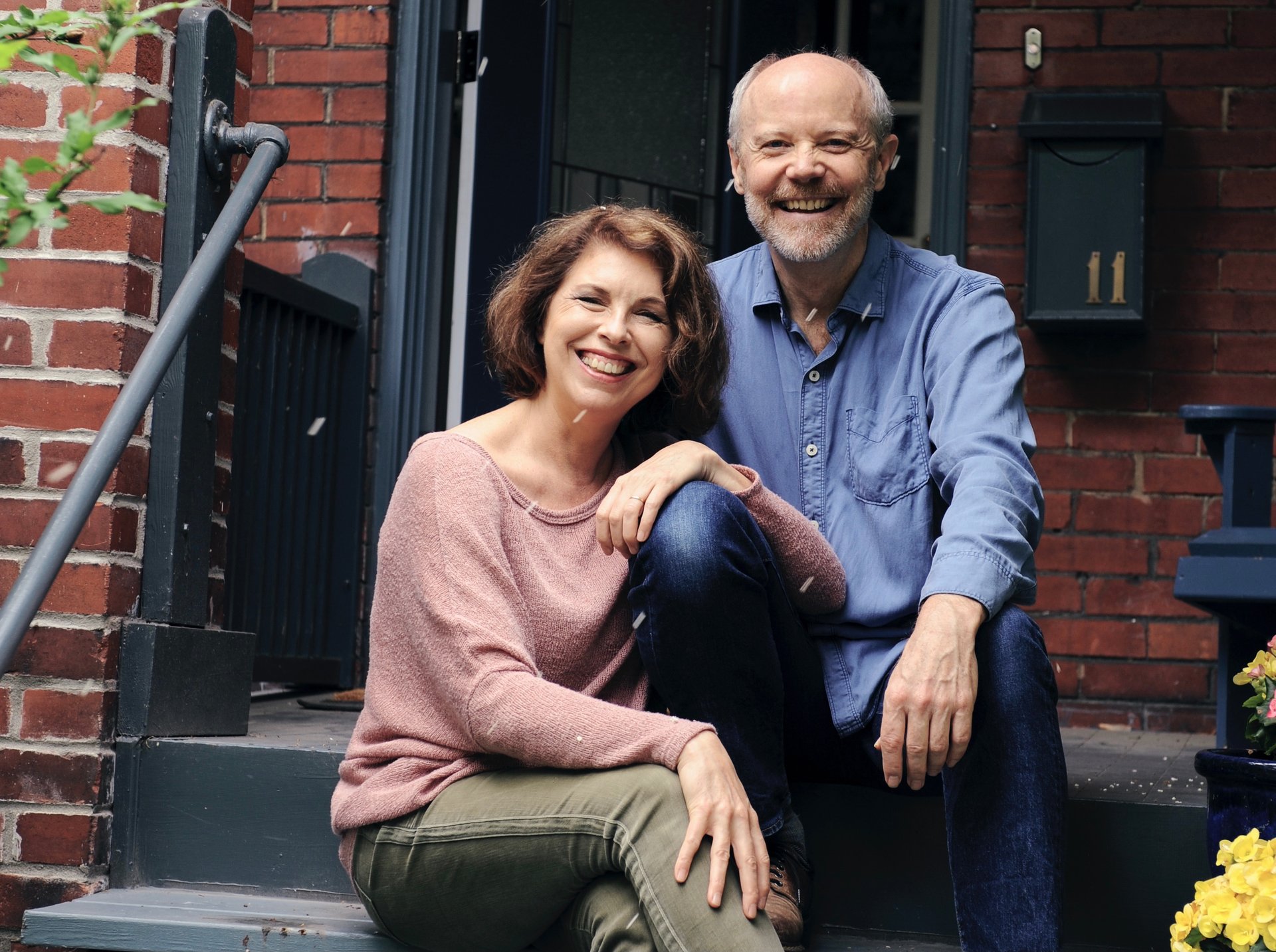Jacques Ibert (1890-1962) earned a Croix de Guerre in the First World War after working his way through school playing piano for silent movies. He went on to win the Prix de Rome, France’s top award for young composers, and composed outstanding concert music as well as a large amount of music for radio and film. Carignane was written for bassoon and piano in 1952. The Carignane grape is hardy and easy to grow and is one of the most widely used varietals in French red wine.
Gabriel Fauré (1845-1924) was one his era’s most famous French composers, best known nowadays for songs like Après un rêve, and for his beautiful Requiem. Trained as an organist, he went on to become director of the Paris Conservatory and even wrote a column on music for the newspaper Le Figaro, giving rise to naysayers who accused him of being too kind. He wrote this Vocalise-Etude in 1906 as part of a series of “études” published for voice students at the Paris Conservatory. They were songs without lyrics, meant to challenge the singers to express themselves without the benefit of words. Fauré’s composition is more often played in its instrumental version, simply called Pièce.
Francis Poulenc (1899-1963) wrote music full of character, wit and colour, music that still, even today, manages to sound modern. His wealthy father forbade him from studying music at the university level so he was largely self-taught. Later in life, his compositions showed more of his serious and religious nature but his early music was often cheeky and unconventional, leading to a critic placing him in a group of daring young composers that came to be known as “Les Six.” He was himself an excellent pianist and toured regularly as a soloist and accompanist. His Improvisation No.7 in C, composed in 1933, is one of several pieces he wrote for solo piano. (This performance is dedicated to the memory of Monique's dear brother André who died on April 19, 2021.)
Maurice Ravel (1875-1937) wrote Pièce en forme de Habanera in 1907, the same year he wrote his opera L’heure espagnole and his famous Spanish-inspired orchestral piece, Rhapsodie espagnole. Ravel’s mother was of Basque heritage and the music of Spain always had a special meaning for him. Considered too innovative, Ravel tried and failed five times to win the Prix de Rome. After his fifth attempt in 1905 was blocked by a suspicious bias in the jury, a national scandal led to the director of the Paris Conservatory being replaced by none other than Gabriel Fauré. Ravel wrote Pièce en forme de Habanera as a vocalise, part of the same Paris Conservatory series for which Fauré wrote his Pièce just a year earlier.
Carl Philipp Emanuel Bach (1714-1788) was the second son of Johann Sebastian Bach and was known as “The Hamburg Bach” so as not to be confused with his father or his composer brothers Wilhelm Friedemann and Johann Christian. For some thirty years, C.P.E. Bach was in the employ of the King of Prussia, Frederick the Great, who was known as a great military leader but was also quite a good flute player. The Sonata for Solo Flute in A minor was most likely written for the King around 1747. In three movements, this sonata shows Emanuel Bach’s signature, galant style containing elements of the baroque but with fewer changes of harmony, less predictability and more emotion. Bach even experiments in the first movement with dramatic moments of silence, something that was not common in music of the day. This version for solo bassoon is in the more bassoon-friendly key of D minor.
In 1874, Georges Bizet (1838-1875) was busy writing his famous opera Carmen but he still found the time to jot down this tiny gem, Little Duet in C Minor for Bassoon and Cello. It was written as a test piece for bassoon students at the Paris Conservatory but given that Carmen contains some famous duets for two bassoons, we might be forgiven for imagining that this duet with cello began as a sketch for the opera.
Despite a difficult childhood, the genius of Claude Debussy (1862-1918) was recognized early and he was admitted to the Paris Conservatory at the age of ten. As a winner of the Prix de Rome in 1884 he lived in Rome from 1885 to 1887, a period he did not speak highly of, despite at least one visit from Franz Liszt. Himself an excellent pianist, Debussy had been a keen accompanist in Paris of his lover, the singer Marie Vasnier and, in fact, he wrote 27 songs for her over the seven years they were together. A year after they ended their affair, he composed Deux Romances for voice and piano in 1891, setting to music poems by Paul Bourget. The Romance on this recording is a suave adaptation of an arrangement by Karl Rissland of the first of these songs, “L’âme évaporée” or “The vanished soul.”
Mathieu Lussier (b.1973) is a composer, bassoonist and conductor based in Montréal. His extensive experience as a performer on period instruments is on display in this Prélude, the first of three preludes he wrote in 2002 for solo bassoon. Many bassoonists play J.S. Bach’s wonderful Suites for Solo Cello and here, Mathieu refers to the style of preludes found in those works but adds his more modern sensibility and a distinctly more bassoon-friendly technique.
Paul Hart (b.1954) is an English composer, bass player and violinist, known for composing an impressive amount of commercial and concert music including commissions for such performers as Evelyn Glennie and The King's Singers. For many years he toured with Cleo Laine and John Dankworth and was much in demand as a session musician. His Andante was written in 2007 as an intermediate-level piece for bassoon and piano but lends itself beautifully to this treatment by the contrabassoon.
John Steinmetz (b.1951) is a composer, writer and bassoonist based in Los Angeles. He teaches at UCLA, has done consulting work for such organizations as the Oregon Bach Festival, the Los Angeles Chamber Orchestra, and Apple Computers, and is a thoughtful and often very funny commentator on the state of art music in the world. He also happens to be a student and protégé of Bill Douglas. Browning is the second movement from his soulful and eclectic Sonata for Bassoon and Piano composed in 1981. Browning was a well-known tune in Renaissance England, also known as “The Leaves be Green.” John has written this movement as a theme and variations, starting with the theme in its simplest form and adding more and more complexity to a triumphant end.
Felix Mendelssohn (1809-1847) composed his Song without Words in 1845 after hearing a performance in Leipzig by Lisa Cristiani, an Italian who goes down in history as the first woman to tour as a professional cello soloist. Since the cello and the bassoon have almost identical ranges, this is playable on the bassoon with virtually no changes.
Robert Schumann (1810-1856) composed this Romance for oboe and piano in 1849 as a Christmas present for his wife, the pianist and composer Clara Schumann. Even after his death, Clara continued to perform the piece with violin so perhaps she would have approved of this version for bassoon and piano.
Francis Poulenc’s Novelette No.3 in e minor was finished in 1959 and was the last piece he wrote for solo piano. It is based on a theme from the opera El Amor Brujo by Poulenc’s long-time friend, the Spanish composer Manuel de Falla who was, funnily enough, the cousin of Jacques Ibert.
Jean-Michel Damase (1928-2013) was a piano prodigy, student of the famous French pianist Alfred Cortot, and his mother was a well-known harpist who premiered works by Fauré and Ravel. He won the Prix de Rome in 1947 and was known for his tuneful and attractive music, of which Automne, composed in 2006, is a particularly beautiful example.
Originally from Canada, Bill Douglas (b.1944) has been based in the USA for many years as a composer, jazz pianist and educator. He is also an excellent bassoonist. He taught for many years at the California Institute of the Arts and the Naropa Institute in Colorado and he was well-known as a collaborator with clarinettist Richard Stoltzman. On this CD, Cantabile and Miles are both part of his Suite Cantando, composed in 2006 for clarinet, bassoon and piano. Caribbean Jig is the fifth movement of his Partita for Bassoon and Piano written in 2005 and Earth Prayer is drawn from his Lyric Suite for Contrabassoon and Piano which dates from 2006. The Partita and the Lyric Suite were both joint commissions, meaning that, thanks to the internet, many performers chipped in together to pay for the writing of the piece and Fraser was one of these co-commissioners. Fraser also had the honour of performing these pieces with Bill Douglas in Toronto and in Ithaca, New York, at the 2007 Convention of the International Double Reed Society. Yes, that’s a real thing. Earth Prayer is one of Fraser’s favourite pieces to perform on the contrabassoon: it sounds like a prayer for the Earth but, because it’s a contrabassoon, it also sounds like a prayer by the Earth.
The music
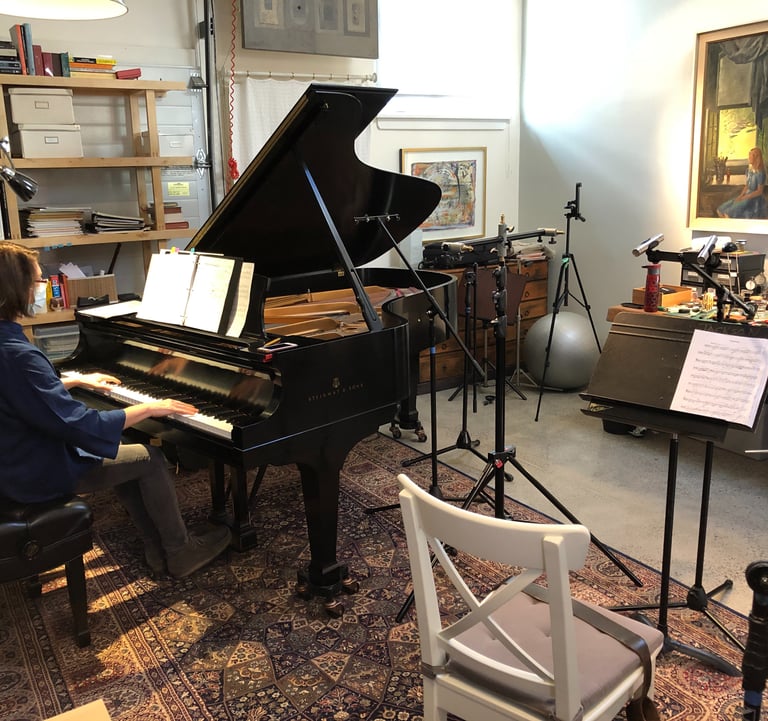

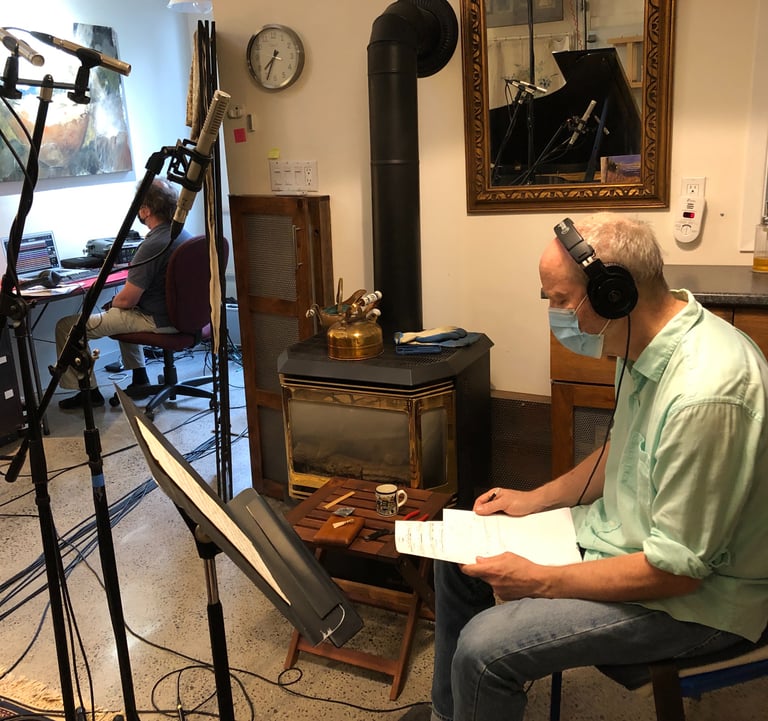

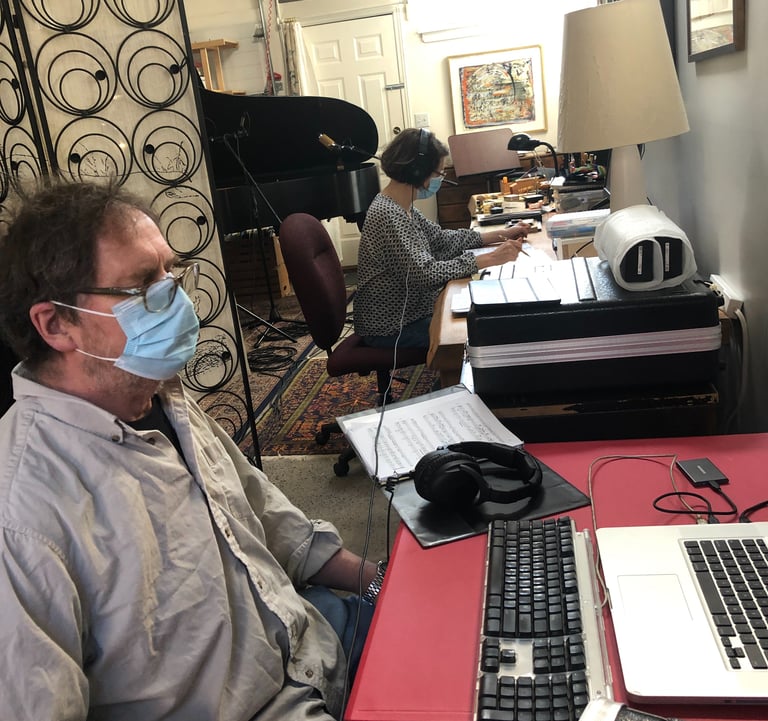

After spending the first few months of the 2020 Covid lockdown cleaning out the basement and learning to bake sourdough bread, we decided to give ourselves a musical outlet by performing on our porch in Toronto’s west end. Fraser brought his bassoon and sometimes his contrabassoon and Monique played on a Roland digital piano. Sometimes friends or students joined us on “stage” and sometimes it was just the two of us. As long as it wasn’t raining, we played every Thursday at 5:30 and several times we even toured to other people’s porches or backyards. It kept us occupied and it was a great way to meet the neighbours; we liked it so much that after taking a break for the cold months, we continued playing concerts right through the summer of 2021. And we decided to record some of our porch repertoire as a CD.
Porch repertoire is pretty straightforward: pieces are easy on the ears, relatively short, not too tough to rehearse, and they come from all over the musical map. Usually we start with the more serious pieces and end with the jazzier material but sometimes it felt right to end with something a bit more sombre. The goal was always to distract, to comfort, to reassure, and above all to get out of the darn house.
All the recording sessions took place in our backyard studio that sits where most people would have a garage. Despite having to stop for the occasional barking dog or power tool, things went relatively smoothly although it took almost a year to record everything. Because of the changing government regulations, it was not always possible to have our engineer, Ron Searles, present in the room with us. Sessions began in December 2020 and ended in September 2021: the first piece we recorded was Automne by Jean-Michel Damase and the last was Gabriel Fauré’s Pièce. Many thanks to Ron for making it all sound as beautiful and consistent as possible.
The making of Home Suite Home
